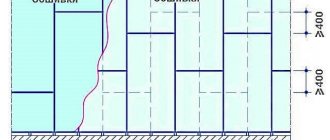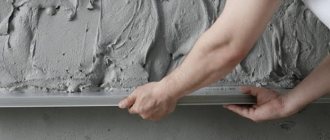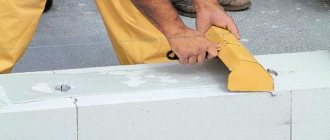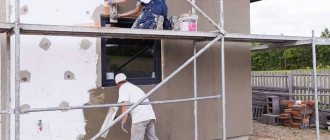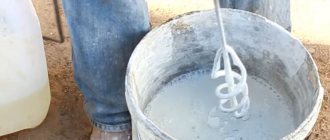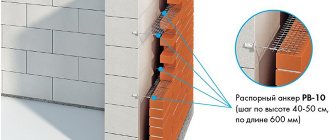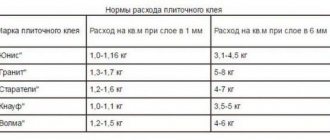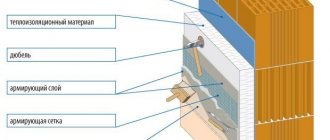Plastering station - what it is and how it works
Equipment of this type is used to obtain, mix, feed and apply mortar, thus accelerating plastering. The design of the station allows it to be used for forming self-leveling floor coverings, for pouring polystyrene concrete as insulation onto roofs or other building structures, walls, etc. On the construction equipment market you can find such models as stationary and mobile (mobile).
For the most part, stationary stations are a change house or an insulated van equipped with a receiving hopper, usually its capacity is 2.5 cubic meters. m. such equipment is installed in the working area of construction sites where surfaces are constantly being plastered. Such devices are distinguished by their high weight, but at the same time they are distinguished by high performance. They show their effectiveness in large volumes of work, for example, in the construction of modern residential buildings, warehouses, and industrial buildings.
Mobile, or mobile stations, as a rule, they are equipped with transport wheels. They are used for outdoor work, for example, in the construction of suburban facilities.
Equipment of this type is used for producing, mixing, feeding and applying mortar.
To power a stationary plastering machine, you will need to connect a power supply line of 380 v; to power mobile equipment, a voltage of 220 v is sufficient.
Structurally, the plastering station consists of:
- Reception bunker. It is necessary to receive the dry mixture.
- A screw, with its help, the components of the solution are mixed.
- A tank designed for mixing the solution. Sometimes, a water dispenser is installed in it.
- Water supply.
- Pump and solution supply system to the work site.
- Unit with control panel.
To power mobile equipment, a voltage of 220 v is sufficient.
The plaster applicator must be connected to the water and electricity supply network. The required characteristics of the connected systems are specified in the station operating manual. If there is not enough pressure in the water supply, you will have to install an additional water tank.
- The dry mixture required to obtain the solution is loaded into a hopper and fed into the mixing tank using a rotating auger. As the solution is prepared, it is transferred using a plaster pump in the direction of the supply hose.
- The solution flows under pressure from the hose to the workplace.
The plaster applicator must be connected to the water and electricity supply network.
The main parameters of the stations include:
- The power, the higher it is, the greater the volume of work the station can handle. You need to pay attention to the potential place of work. Is it possible to use a stationary station or is it possible to install a mobile unit;
- Performance. Traditionally, plastering stations produce from 1 to 6 cubic meters per hour. These numbers must be linked to the amount of work;
- Delivery range of finished plaster composition, up to 50;
- Receiving hopper capacity.
Traditionally, plastering stations produce from 1 to 6 cubic meters per hour.
Advantages and disadvantages of use
A plastering station, like any equipment for plastering walls, has its advantages and disadvantages. Let's look at them in more detail.
- High productivity;
- Reduced labor costs;
- Reducing the amount of time to complete a given amount of work;
- High quality of the finished solution.
To carry out work and maintain the station, it is necessary to ensure the presence of a team that includes:
- Masters of machine plastering;
- 4 trained workers whose responsibilities include preparing the finished solution and maintaining the station.
Experience in using such equipment suggests that such a team can produce up to 200 cubic meters in one shift. M. ready plaster mortar.
To carry out work and maintain the station, it is necessary to ensure the presence of a team.
It is worth noting that the cost of production is quite high. This is due to the cost of the source material, the size of the wage fund (wage fund), and the size of the resources consumed. To prepare the finished solution, ready-made dry mixtures are used. Costs are also negatively affected by difficulties associated with maintenance. For example, cleaning the installation requires certain preparation.
As a rule, at such a station it is possible to prepare a solution based on cement or gypsum. A plastering station is good where a large amount of work needs to be done, and very quickly.
A plastering station is good where a large amount of work needs to be done, and very quickly.
Comparison of manual and machine techniques
Regardless of what type of plaster is used to finish the surface, it can be applied either manually or using mechanized means, that is, machine stations. Each method has both pros and cons, and this causes certain difficulties in selecting the necessary equipment.
Subtleties of using machine plaster. As has been noted more than once, dry mixtures are used to prepare the finished solution; a solution made from such a mixture moves quietly through pipelines and does not stick to installation parts.
Modern manufacturers have begun to replace metal parts with polymer ones.
When using the installation, the consumer receives the following benefits:
- The solution application process is fully automated.
- Reduction in the number of workers.
- The consumer gets the opportunity to process niches and openings.
The preparation of the finished solution is carried out using special equipment. One plaster application machine can process up to 45 square meters. m.
One plaster application machine can process up to 45 square meters. m.
Handmade subtleties. Applying a layer of plaster can also be done manually. This will require the use of standard tools. Processing walls and facades takes more time. If we compare between manual and automated application methods, it will immediately be clear that manual application of plaster is several times slower than mechanized application.
Processing walls and facades takes more time.
As noted earlier, the basic difference between manual and mechanized plastering lies in the speed and quality of the work performed. In fact, the materials used are similar; the only difference is that the plastering machine works with a mixture in which additives are used.
In reality, plastering work can be done in both ways, it all depends on the expected volume of work, the skill of the workers, etc.
Operating principle of a plastering station.
Operating principle of a plastering station.
The PFTG4 (G5) station is structurally divided into two zones: a zone for dry mixture and a zone for ready-made mortar mixture. From the receiving hopper, the dry mixture is fed into the mixing chamber by a feed drum, where it is mixed with water using a mixing spiral, then the finished mortar mixture is supplied to a pump, which forces it through a mortar hose. The machine can be started at any time, regardless of the degree to which it is filled with dry mixture. There is no need to wait until all the material is exhausted to stop or load the machine.
1. Dry construction mixture is continuously fed into the receiving hopper of the station.
2. The mixture is dosed into the mixing chamber, where it is mixed with water and mixed in a strictly specified constant ratio: dry mixture/water.
3. From the mixing chamber, the solution is supplied using a screw (screw) mortar pump (rotor and stator) through a mortar hose under pressure.
4. Parallel to the solution pipeline, compressed air enters a special nozzle, and from the nozzle the solution is sprayed onto the surface.
When using PFT G5 Super, the efficiency of a team of four specialists in one work shift can reach:
- when plastering with gypsum solutions ~80-120 m2;
- when plastering with cement mortars ~100-150 m2;
- when installing self-leveling floors using self-leveling solutions ~200 m2;
- when installing cement-sand and concrete screeds ~200-250 m2.
Technology for performing work using a mechanized (machine) method.
Preparation for work.
- Delivery of plastering unit and tool kit.
- Installation and installation of the unit at the workplace.
Preparation of plaster surfaces.
Before starting work, the surfaces must be cleaned of formwork compound, seams and sagging of concrete, masonry mortar, mounting adhesive, etc. protruding parts of more than 10 mm have been removed, protruding metal elements have been cut off and protected from corrosion. Loose areas of surfaces must be secured or removed.
- Concrete panel or monolithic bases, as well as painted surfaces, plasterboard and gypsum fiber, tongue-and-groove slabs are dust-free and primed with Betokontakt. "Betokontakt" is applied using a paint roller or brush.
- Surfaces made of ceramic, silicate bricks or blocks, foam concrete, aerated concrete, cinder block and other materials that have non-smooth and absorbent surfaces are treated with Grundermittel primer or similar penetrating and fixing compounds. The primer is applied using a spray gun or a high-pressure spray gun, ensuring effective dust removal.
- Rusts, cracks and joints of different materials on surfaces are reinforced with nylon mesh with a cell size of 5mm/5mm -10mm/10mm.
Surface marking.
- The verticality of surfaces is checked with a wide level 2-3 m long, and the horizontal direction is checked using a cord or template. Based on the results of checking the surfaces, the most protruding place is determined.
- Using the corner rule or special corner templates, the corners of the rooms are checked.
- Surfaces are being marked for placing beacons. “Mortar tracks” are applied to the marked areas to secure the beacon.
Leveling the solution and forming the surface.
The operation is performed within 30-50 minutes (depending on the characteristics of the plaster mixture) from the moment the solution is applied to the surface or while the solution remains mobile.
Immediately after applying the solution to the surface to be treated, it is first leveled (pulled along the beacons, if installed). Leveling, tightening, and distributing the mixture over the surface is carried out using the h-shaped rule. If in some places there is not enough solution, it must be reapplied and leveled. The formed surface is brought to the required shape using the h-shaped rule.
Puttying the surface.
Completed in 90-120 minutes. from the moment the solution is applied to the surface to be treated.
The leveled surface is generously moistened with water from a spray bottle. Aged for 3-6 minutes. until water is completely absorbed (the surface stops shining). Next, the wetted surface is rubbed with a sponge trowel, which leads to “rejuvenation” of the surface layer and the appearance of so-called “putty milk”. Next, the rubbed surface is processed with wide spatulas until smooth. If necessary, this operation is repeated one or two more times. At the puttying stage, the lines of the corners are cut with a special corner plane and puttyed with a spatula for internal corners.
Requirements for the quality of work performed.
Simple plaster - applied in basements, warehouses, non-residential premises, attics, in all rooms where a perfectly flat surface is not required. Thickness is usually 10-12 mm.
Permissible deviations for ordinary plaster are no more than three irregularities with a depth or height of up to 5 mm when the rule is applied. Deviation from the vertical is no more than 15 mm for the height of the room, from the horizontal no more than 15 mm for the entire room. Deviations in the width of the plastered slope from the design width are not checked for this type of plastering.
This type, such as improved plaster, is performed in public and residential buildings, in utility rooms. Improved plaster is performed as follows - add a layer of spray, a layer of soil, and a covering layer, checking the rule. The average layer thickness is 15 mm. At the end, the covering layer is rubbed with graters and smoothed with trowels.
With improved plaster, the following deviations are allowed - no more than two irregularities up to 3 mm. Deviation from the vertical is no more than 2 mm per 1 m of height, but no more than 10 mm for the entire height of the room, deviation from the horizontal is no more than 2 mm per 1 m of length, but no more than 10 mm for the entire length of the room limited by purlins, beams, etc. P.
High-quality work is carried out in those buildings and structures for which strict finishing requirements are applied, hotels, residential premises, and public places. This type of plaster is performed by installing beacons and spraying, and then stretching along the beacons. Moreover, various materials can serve as beacons; these can be either galvanized beacons, or beacons can be made from quick-hardening solutions (alabaster).
The requirements for high-quality plaster are as follows: no more than one unevenness, 2 mm in depth or height, when applying the rule. Deviation from the horizontal is 1 mm per meter of length, but not more than 7 mm for the entire length of the room; deviations from the vertical can be 1 mm per meter of height, but not more than 5 mm for the entire height of the room.
Machine floor screed.
Cost of work.
The cost of a mechanized screed depends on the following factors:
· area of the room;
· composition of the solution;
· thickness of the material layer;
· the need for waterproofing, laying cables and pipelines;
· remoteness of the object;
· complexity of preparatory processes.
·
The cost of installation of cement-sand floor screed.
| TYPES OF JOBS | COST WITHOUT MATERIAL | COST WITH MATERIAL | ORDER SERVICES |
| up to 100 sq.m | 33,000 rubles (for the entire volume) | 50,000 rubles (for the entire volume) | Order service |
| from 100 to 500 sq.m | 270 rub / sq.m. | 470 rub / sq.m. | Order service |
| from 500 to 1000 sq.m | 250 rub/sq.m. | 430 rub / sq.m. | Order service |
| from 1000 to 3000 sq.m | 220 rub/sq.m. | 390 rub / sq.m. | Order service |
· The price is indicated for screed thickness up to 50 mm
· Increasing the thickness of the screed increases the cost by 30 rubles/sq.m for every 10 mm
· The cost of materials includes: Portland cement grade M 400, alluvial sand, plasticizer, fiberglass, polyethylene film 80 microns, isolon.
Operating principle of a plastering station.
The PFTG4 (G5) station is structurally divided into two zones: a zone for dry mixture and a zone for ready-made mortar mixture. From the receiving hopper, the dry mixture is fed into the mixing chamber by a feed drum, where it is mixed with water using a mixing spiral, then the finished mortar mixture is supplied to a pump, which forces it through a mortar hose. The machine can be started at any time, regardless of the degree to which it is filled with dry mixture. There is no need to wait until all the material is exhausted to stop or load the machine.
1. Dry construction mixture is continuously fed into the receiving hopper of the station.
2. The mixture is dosed into the mixing chamber, where it is mixed with water and mixed in a strictly specified constant ratio: dry mixture/water.
3. From the mixing chamber, the solution is supplied using a screw (screw) mortar pump (rotor and stator) through a mortar hose under pressure.
4. Parallel to the solution pipeline, compressed air enters a special nozzle, and from the nozzle the solution is sprayed onto the surface.
When using PFT G5 Super, the efficiency of a team of four specialists in one work shift can reach:
- when plastering with gypsum solutions ~80-120 m2;
- when plastering with cement mortars ~100-150 m2;
- when installing self-leveling floors using self-leveling solutions ~200 m2;
- when installing cement-sand and concrete screeds ~200-250 m2.
Features of the equipment and rules for working with it
The features of the plastering station include the ability to produce solutions based on the use of different binders - cement, gypsum.
The features of the plastering station include the ability to produce solutions based on the use of different binders.
How does a mechanized assistant work?
The operation of the plastering machine must be carried out strictly according to the rules, in particular, maintenance must be carried out only after disconnecting from the network and completely stopping it. As a rule, the manual for using the plastering machine indicates both safety measures and the operating procedure of the station. By the way, it wouldn’t hurt to pay attention to the duration of the warranty service
If the solution is applied in winter, then it will be necessary to organize drying of the applied layer; for this, you can use heaters. Any type, with the exception of those using open fire. The plastering plant may only be operated by trained workers who have received appropriate instruction. Responsibility for trouble-free execution of work rests with the site foreman.
The plastering plant may only be operated by trained workers who have received appropriate instruction.
General information
The pace of housing construction is increasing, so the demand for “mechanical assistants” is increasing. In addition, it is very difficult to implement new technologies without the use of modern types of construction equipment .
One of the most basic finishing processes is the application of a layer of plaster to various surfaces. On small areas, of course, it is more convenient to apply it manually, although this is not a fact, but for large volumes the method is no longer suitable.
Therefore, new technologies have come to the aid of plasterers. Traditionally, when mechanizing this process, they use small-sized plastering stations, which are also very mobile. Their price depends on the volume of the bunker and other factors.
Screw pair for plaster station for supplying mortar
They are intended for:
- quick preparation of finishing mixture;
- supplying the solution to the desired location;
- applying it to the surface.
Advice: to operate plastering stations, use only special construction mixtures based on gypsum, cement and sand, and polymer materials.
Using plastering stations, work is carried out with a wide range of applications:
- decorative plaster;
- thermal insulation of surfaces;
- fire protection of materials;
- repair and waterproofing of surfaces;
- flooring;
- production of screeds;
- production of self-leveling floors.
The list presented above confirms the versatility of these units.
Spare parts for plastering station for air system
Design
In the manufacture of plastering stations, the following main components are used:
- A receiving hopper into which dry construction mixture is placed to prepare a working solution.
- It is prepared in the mixing chamber.
- The drive is an electric motor or an internal combustion engine running on diesel fuel.
- Using a mortar pump, the finished mixture is fed into the mortar sleeve.
- The process is controlled using the control panel.
- An air compressor makes it possible to build up pressure in the system.
Air compressor for plastering station
- The water pump is widely used in new plastering stations.
- Water and mortar hoses are necessary to supply the solution to the right place.
- With a controlled nozzle, you can increase the mass of the mixture over a certain time or reduce its flow.
History and advantage of the plastering station
In 1965, the first production version of the device appeared, which was used mainly for gypsum-based mixtures. During work, German designers discovered a large number of shortcomings of the machine, the main one of which was the inconvenience of loading dry mixture due to the engine located directly above the bunker. This was the impetus for the development of a new unit. (See also the article Finishing with decorative plaster: options.)
Apparatus with a motor above the hopper
In the next version, nothing interfered with loading the mixture. A breaking ridge also appeared on the bunker, making it easier to unload from bags. Another innovation was the ability to connect the mechanism to a pneumatic transport system.
The operational disadvantage of such table units is that the mixture flowed from the receiving hopper into the chamber by self-fill. Because of this, it got wet at the first stage, which affected the final quality of the solution. In addition, to stop and clean the machine, the dry plaster bin had to be completely emptied.
The designers changed the engine layout
The next version of the plastering station is produced today by many factories. This is due to the fact that the unit is not patented and it is more advanced than machines of previous generations.
However, despite the fact that many of the shortcomings have been eliminated here, there are still many technical issues that are related to the quality of the prepared solution.
In turn, this leads to an increase in work completion time and a decrease in the quality of the treated surface:
- Water is added directly to the dry mixture, resulting in poor mixing.
- The material is fed into the mixing chamber in unmetered quantities, and this also affects the final quality.
- Structurally, the mixing shaft is not sophisticated and is already obsolete, which prevents the solution from being prepared efficiently.
- Units of this type are made only of metal, which makes them difficult to clean.
Common type of plastering station
The advantage of machine application of the solution
First, let's look at the operating principle of the plastering station:
- Connect the plastering station on the construction site to the electrical network and water supply (there may be a separate container with water).
- Determine the required ratio in the working mixture of components on the control panel.
- Pour the dry mixture into the hopper. The station is ready for use.
The rest of the control occurs directly on site using air supply. The mixture is blown onto the surface from a nozzle under the action of compressed air.
Advantages:
- Significant increase in labor productivity, up to almost 200 m2 per shift. It is simply unrealistic to complete such a volume manually, even theoretically.
- Obtaining additional profit due to increased labor productivity, which makes it possible to take on additional volumes for work.
- Savings in finishing materials, which is directly related to reductions in production losses and the modern method of applying the working solution to the surface.
- For finishing companies, the use of plastering stations makes it possible to organize the production process in such a way that it is possible to refuse the services of organizations that were previously suppliers of ready-made mortar.
- It is also possible not to hire auxiliary workers, since with the help of hoses the mixture can be supplied to a distance of almost 60 m and to a height of almost the 10th floor.
- The design of the plastering station makes it possible to easily move it across the floors of the building and the construction site.
Spare parts for the plastering station necessary for its operation
From the above, it becomes clear that use will have a positive impact on its image. It will be able to confidently compete in the market in terms of order completion times, which will have a positive effect on increasing profits.
Machine application of plaster
Below are instructions that will tell you in detail about the stages of applying plaster to the wall using a plaster station:
- Clean the base from peelings, old mortar, dust and dirt using a spatula and brushes with soft and hard bristles.
- Apply a suitable deep penetration primer using a roller or brush. To do this, prepare a container into which it should first be poured from a canister.
- Prepare the plastering station for work and set the required water pressure.
Do-it-yourself plastering station based on a pneumatic gun
- Fill the receiving hopper with a dry mixture for machine application based on cement or gypsum.
- Prepare a stepladder or scaffolding.
- Take the mortar gun and stand sideways to the surface to be treated.
- Wait about half a minute until the solution starts to appear from the nozzle.
- First apply the solution to the corner line, and then begin plastering the surface from the upper left corner.
- Apply the mortar to the wall in strips approximately 700 mm long.
Using a mortar gun to apply plaster
Tip: overlap each strip by 50-100 mm.
- Continue applying plaster from top to bottom in 700mm wide sections until you have filled the entire wall to be treated. In this case, the mortar gun must be kept at a distance of 300 mm from it.
- Screed the mortar using the H-rule.
- Take the mortar gun, open the air valve and apply the mortar to the areas where it is lacking. Make the screed again.
- After the plaster mixture begins to set, level the surface using the rule.
How to choose a plastering station
To guarantee the quality of finishing when using dry mixtures for plastering large areas, it is necessary to use a mechanized method that can ensure high labor productivity. Therefore, questions may arise as to whether it is better to use a screw pump or a plastering station?
Advice: before going to the store, you should know which mixtures will mainly be used - factory-made or home-made.
The main thing is what materials will be used in the work. (See also the article How to install beacons for plaster with your own hands.)
Dry mixtures should be divided into 4 types:
- for manual cooking;
- for machine, maximum fraction up to 4 mm;
- multicomponent - cement, sand, sometimes lime for the plasticity of the solution with a grain fraction of up to 6 mm;
- ready-made solution coming from the mortar unit, fraction up to 6 mm.
Homemade plastering station for applying a “fur coat”
For pp. 2-4 you can use any mechanized equipment. It is prohibited to use solutions in which the grain fraction exceeds 6-8 mm.
Stages of applying plaster using a plaster station
The application of plaster coating is carried out in several stages; let’s look at them in more detail.
Preparatory work
Grid installation. To improve the quality of the coating, a reinforcing mesh made of galvanized steel rod is fixed to the walls.
To improve the quality of the coating, reinforcing mesh is fixed to the walls.
Padding. One of the common construction operations is applying a layer of plaster to walls, ceilings, etc. In fact, this is a labor-intensive operation that takes a lot of effort and time. This is especially true for buildings with large areas. Some time ago, construction equipment companies launched stationary and mobile plastering stations onto the market. Let's consider their classification, principle of operation and the difference between automated and manual application of plaster.
For surfaces that actively absorb moisture, soils that form a protective film are used. It is designed to prevent cracking of the plaster layer.
For surfaces that actively absorb moisture, soils that form a protective film are used.
Lighthouses are zinc-coated profiles installed vertically or horizontally. A laser level is used to install them.
Lighthouses are zinc-coated profiles installed vertically or horizontally.
Direct application
This is the main stage of plastering the surface. To perform this work, a plastering unit is used, the solution obtained in it under pressure is applied to the surface to be treated.
The next operation is trimming the drying layer; to carry it out you will need to use the trapezoidal rule. To perform correct pruning, installed beacons are used. After trimming, the following operations are performed: removing beacons and grouting. At the customer's request, gloss can be applied to the plastered surface.
To perform this work, a plastering unit is used, the solution obtained in it under pressure is applied to the surface to be treated.
Drying the applied plaster
This is the last phase of plastering. The drying mode of the plaster is usually indicated in the packaging of the dry mixture. It was noted above that in the cold season it is permissible to use heating devices.
The drying mode of the plaster is usually indicated in the packaging of the dry mixture.
A few words in conclusion. Plastering equipment allows you not only to speed up the work on plastering a room, but also to ensure the proper quality of the coating.
Equipment parameters and features
The station for mechanized plastering of surfaces is a compact device that consists of the following units and components:
- bunker for loading dry components;
- tank for preparing the solution;
- electric or diesel engine;
- pump for supplying the mixture;
- control panels.
Thus, the unit not only prepares the solution, but also supplies it to the working surfaces using a solution pump. It should be noted that such a technical tool is designed to work with special construction compounds, the main components of which are high-quality cement, sand and polymer additives. If you use materials that are not provided for in the instructions, the equipment may fail.
The main parameters of the unit that should be taken into account when choosing a model for a specific type and volume of finishing work:
- Power. For large-scale work, you should choose a unit with maximum power.
- Performance. It is also necessary to take into account volumes, since this figure can range from 1.0 to 6.0 m3/hour and higher.
- The distance over which building material is supplied.
- Material for manufacturing components and parts. The solution adheres to steel elements more strongly than to polyurethane components.
- The volume of the tank for receiving the dry mixture.
